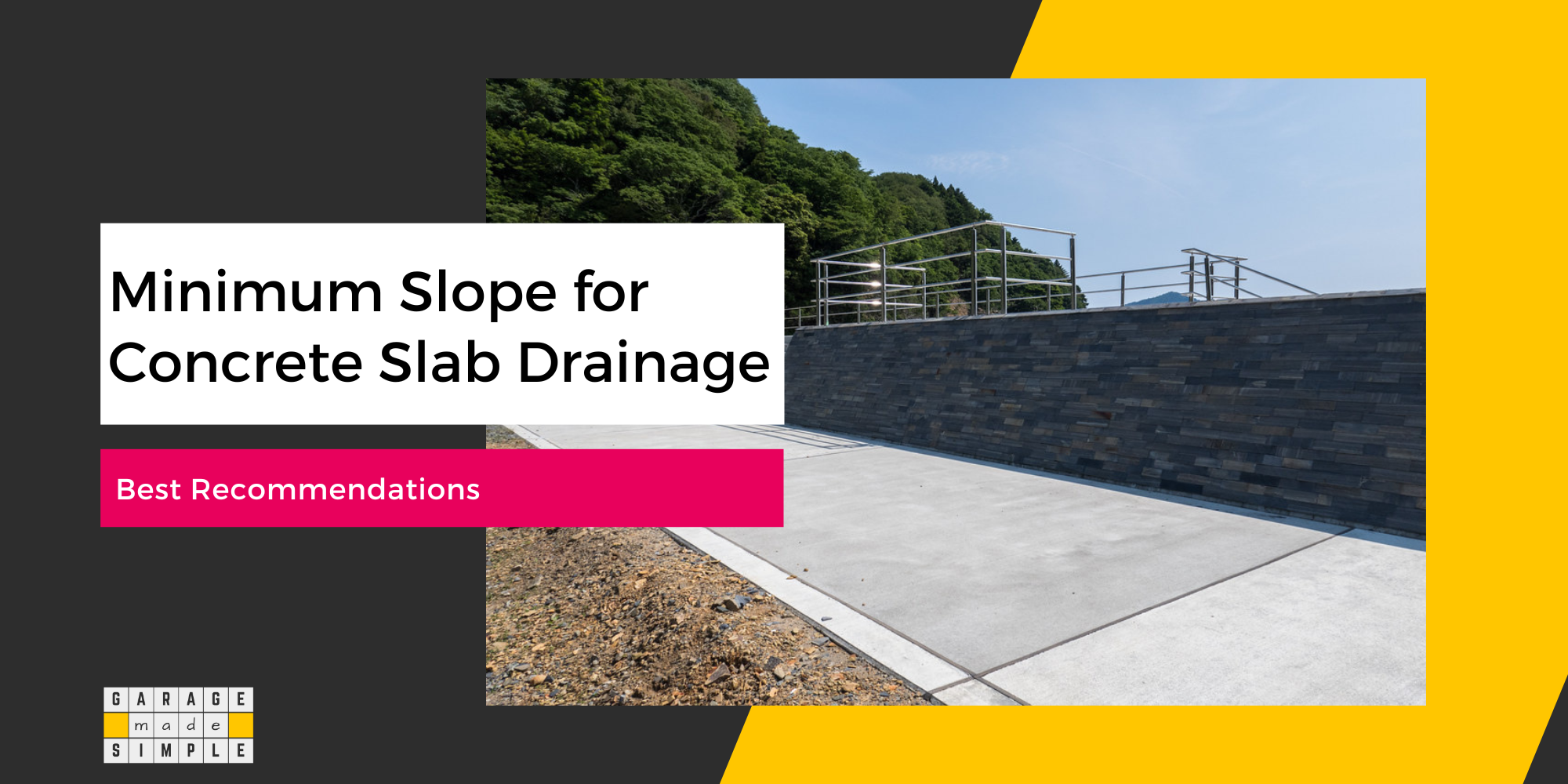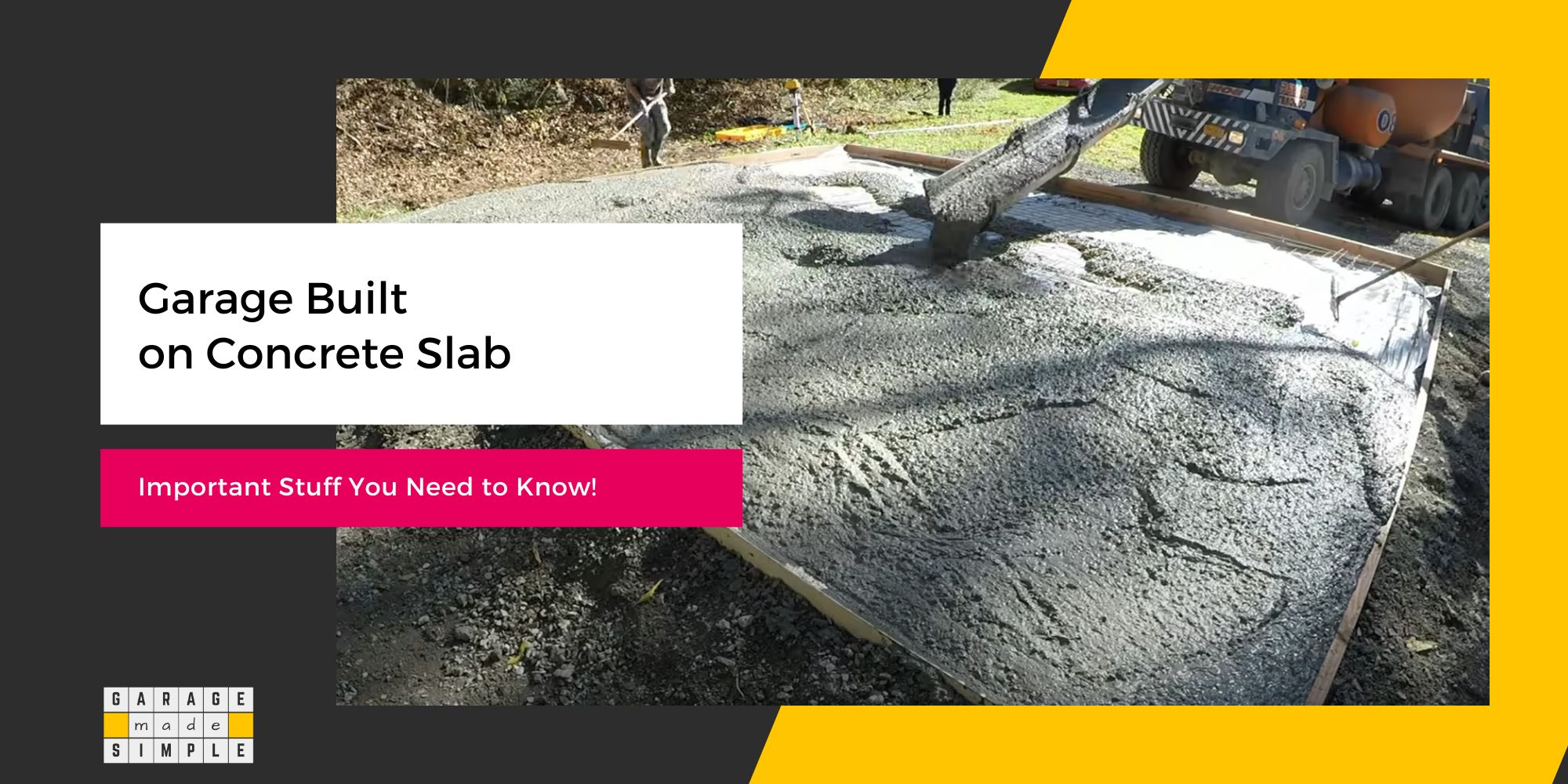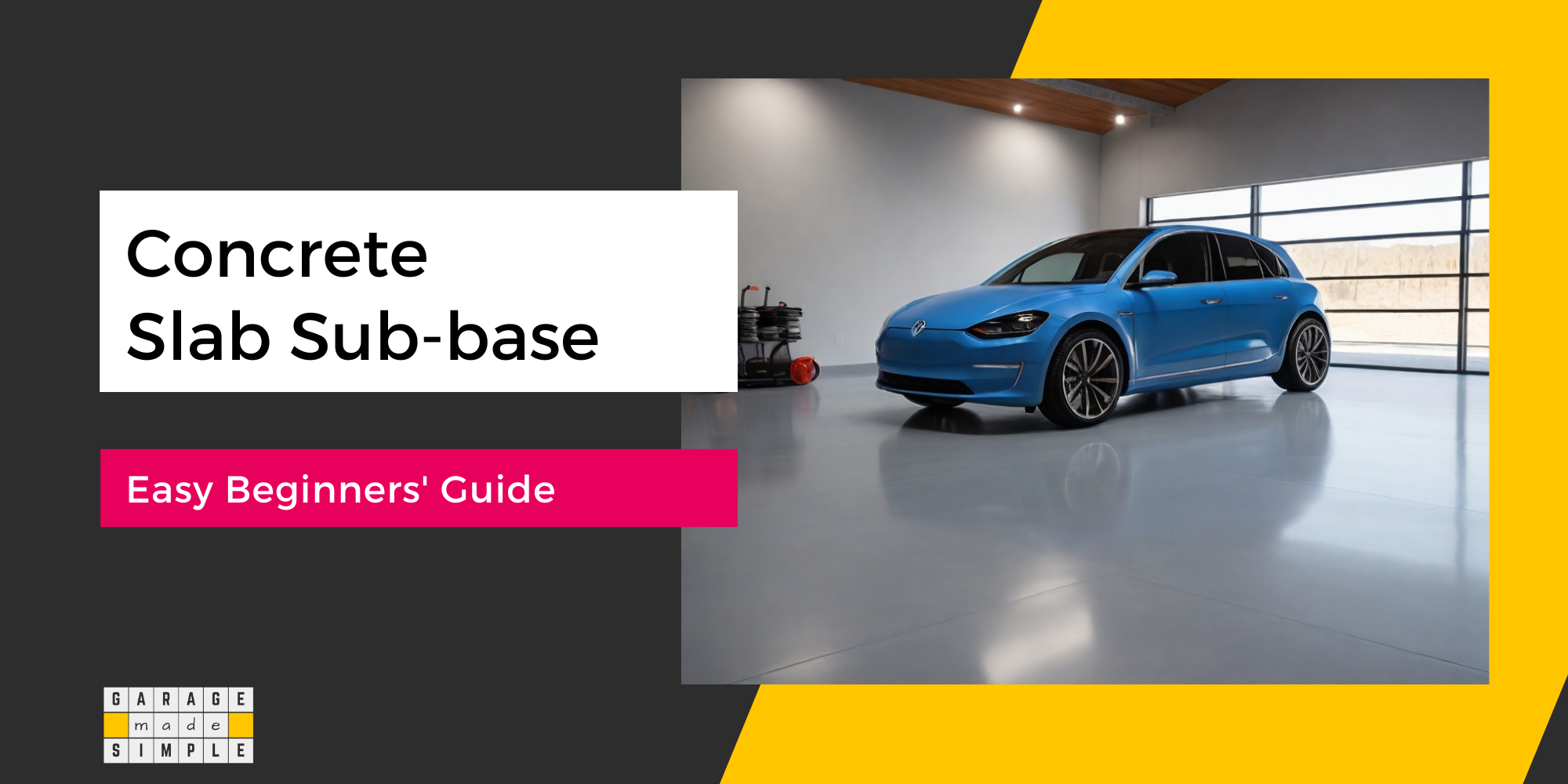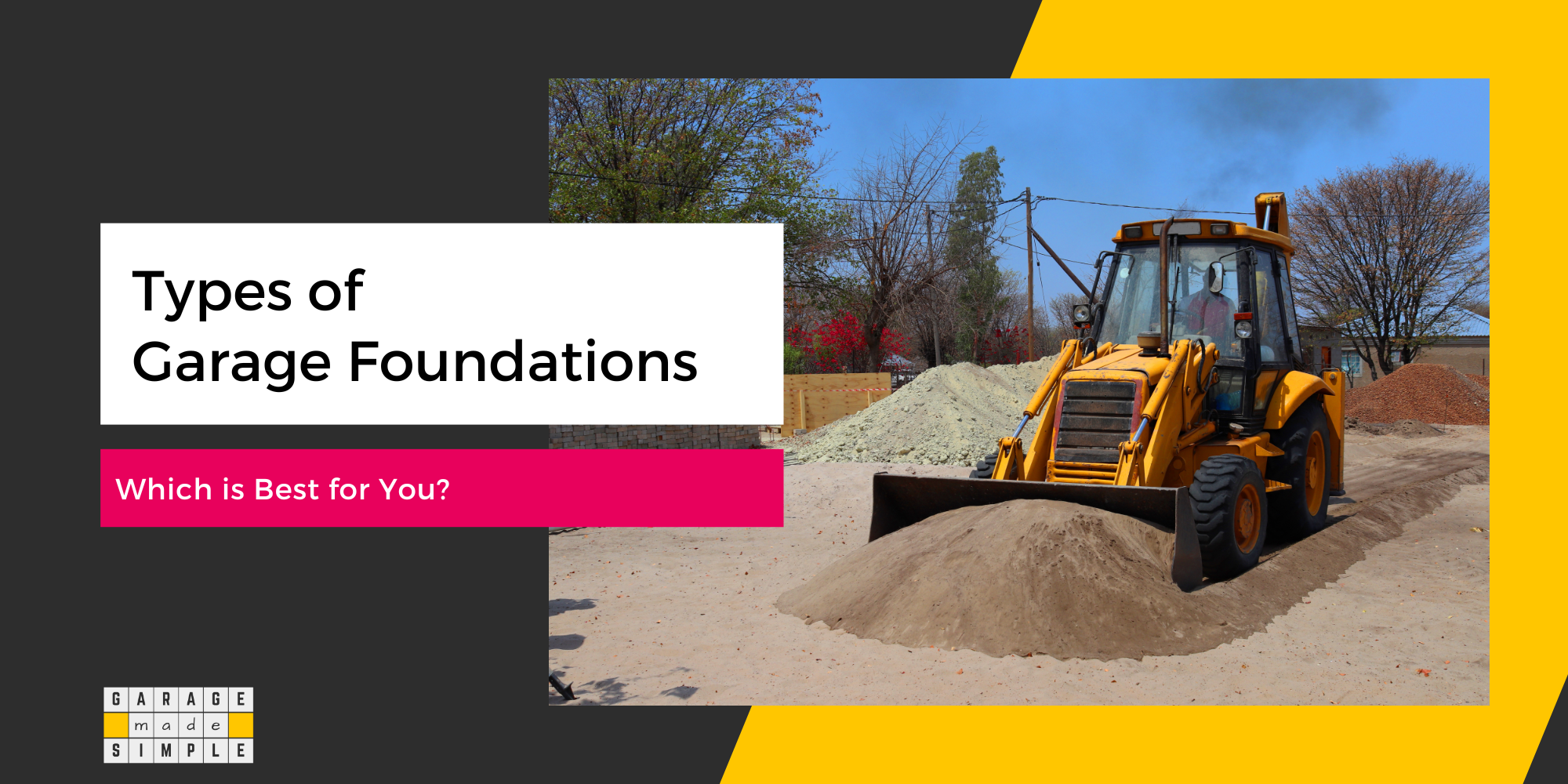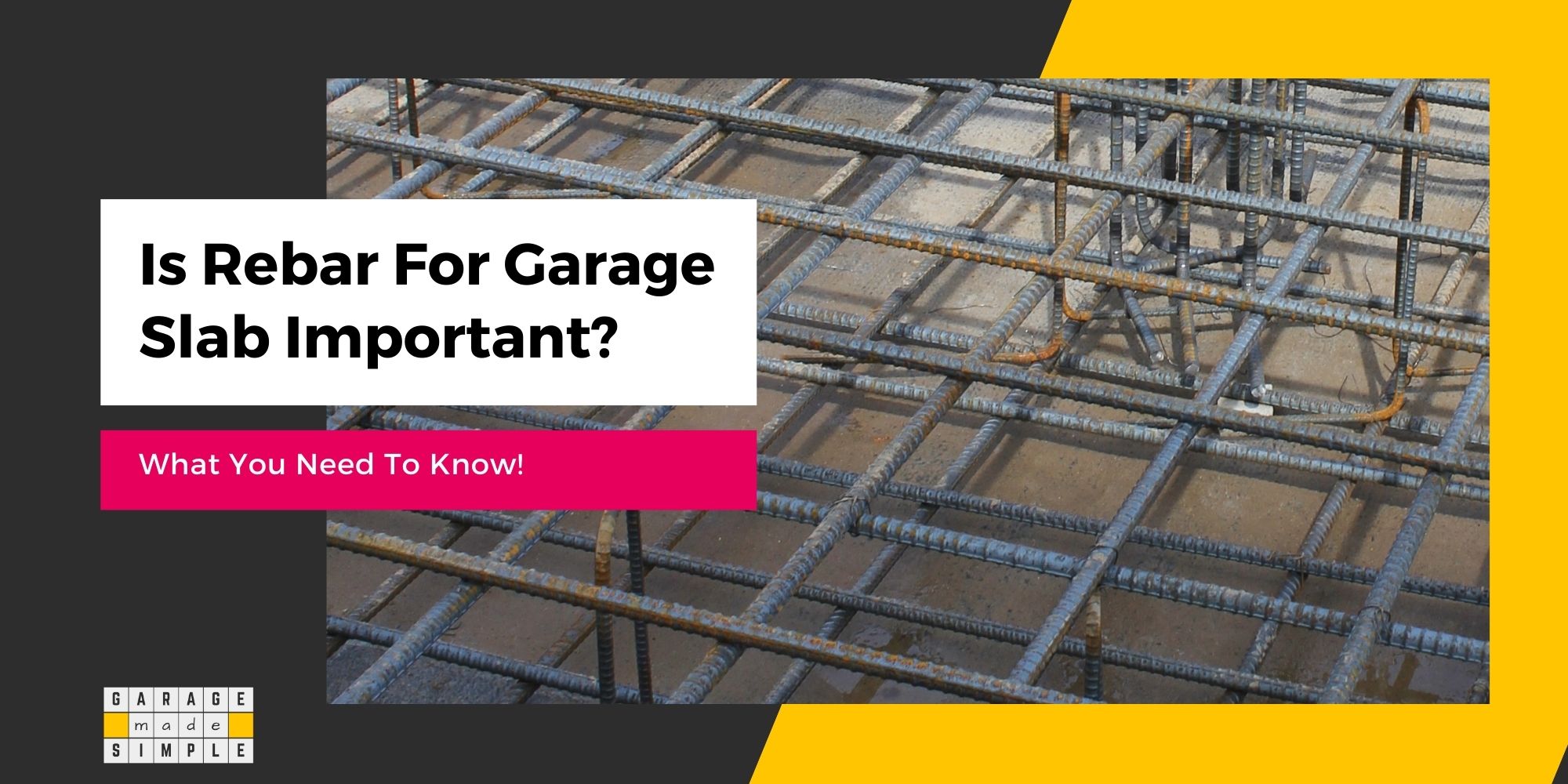Wire Mesh for Concrete Slab: Comprehensive Guide
garagemadesimple.com is a participant in the Amazon Services LLC Associates Program, an affiliate advertising program designed to provide a means for sites to earn advertising fees by advertising and linking to Amazon.com . The website is also an affiliate of a few other brands.
Wire mesh for concrete slab is one of the two most popular ways of pouring a reinforced concrete slab. Concrete is a robust and strong material but relatively brittle. It is prone to cracking under the stress of heavy loads, ground movement or temperature changes.
Wire mesh for concrete slab acts as a reinforcement. Rebar for concrete slab is another option for reinforcement but it is expensive and not practical for concrete slabs that are 5” or thinner.
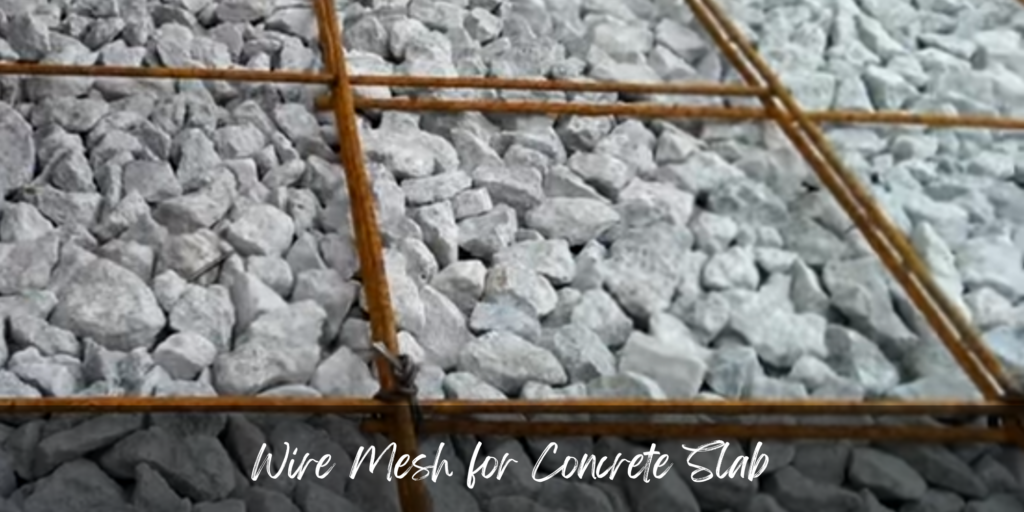
Wire mesh for concrete slab ensures its structural integrity and prevents cracks from expanding, Correctly installed wire mesh extends the life of a concrete slab and increases its load-bearing capacity.
What is Wire Mesh for Concrete Slab?
Welded wire mesh, also known as welded wire fabric, is a grid-like framework manufactured from steel wires, welded together at their intersections. This wire mesh is strategically placed on chairs within the form so that it gets embedded within the concrete slab.
The wire mesh for concrete slab significantly enhances the textile and flexural strength along both the length and width of the slab. In addition it holds the slab together and prevents it from collapsing should the slab develop major structural cracks due to overloading or extreme ground movement.
Types of Wire Mesh
There are three types of wire mesh that are used as reinforcement in concrete slabs. They are:
Welded Wire Mesh
Welded wire mesh is manufactured by welding steel wires at the cross points to create a grid pattern. It is a popular choice due to its durability and ease of handling.
Welded wire mesh ensures consistent spacing between wires, ensuring uniform reinforcement throughout the concrete slab. This type of mesh is ideal for various residential applications, from small-scale projects like patios to larger constructions such as garage floors.
Expanded Metal Mesh
Expanded metal mesh is made by cutting and stretching a sheet of metal, creating a diamond-shaped pattern. It is lightweight yet robust, making it suitable for applications where weight is a concern.
Expanded metal mesh provides excellent reinforcement for concrete slabs, especially in areas prone to soil movement. Its unique structure allows for efficient load distribution, making it an optimal choice for projects like sidewalks and garden pathways.
Fiberglass Mesh
Fiberglass mesh is a lightweight and corrosion-resistant alternative to traditional steel wire mesh. It is made from woven fiberglass threads coated with an alkaline-resistant material.
Fiberglass mesh is particularly useful in applications where steel reinforcement may not be suitable, such as in environments where corrosion is a concern. While it is not as strong as steel mesh, fiberglass mesh offers adequate reinforcement for minor residential projects like garden walkways and decorative concrete surfaces.
Advantages of Wire Mesh for Concrete Slab
Wire mesh is a versatile and cost-effective reinforcement material for concrete slabs. It offers several advantages, including:
Improved Tensile Strength
Wire mesh increases the tensile strength of the concrete slab in both directions. Tensile and flexural stresses get distributed more evenly throughout the slab, reducing the risk of cracking.
This is especially important for concrete slabs that are likely to be subjected to heavy loads, ground movement or fluctuating temperatures.
Increased Resistance to Crack Propagation
Wire mesh for concrete slab helps to bridge cracks that do occur, preventing them from propagating and causing further damage. The wire mesh’s interconnected grid structure helps to transfer loads around the crack.
Enhanced Durability
Wire mesh increases the durability of the concrete slab due to its ability to contain cracks. Water penetration in cracks in concrete is the key reason for early degradation of concrete slabs, particularly those that are exposed to a humid and corrosive environment.
Speeds Up Construction
Wire mesh rolls are easy to handle and lay out on the soil support system (as compared to rebars). Naturally, this helps to speed up the construction process.
Moreover, wire mesh can also be pre-fabricated into mats, which can further reduce installation time.
Reduced Costs
Wire mesh is a relatively inexpensive reinforcement material (cheaper than rebars), making it a cost-effective option for many projects. The faster construction times and reduced labor costs associated with using wire mesh can lead to further savings.
Rebar or Wire Mesh for Concrete Slab
Rebar and wire mesh are both steel reinforcement materials used to increase the tensile strength of concrete slabs.
They have many similarities but quite a few differences too. The choice of using one or the other usually depends on the application.
Rebar
- Rebar is made of thick steel bars that are cut to size and tied together on the construction site.
- Rebar is suitable for use in any structure poured at any angle.
- Rebar is more expensive than wire mesh, but it is also stronger and provides more support.
- Rebar is typically used in slabs that are 5” or thicker.
- Rebar is almost always the reinforcement of choice for large commercial and industrial projects. It is ideal where high strength and load-bearing capacity are required.
Wire Mesh
- Wire mesh is made of thinner steel wires that are welded together in a square grid pattern.
- Wire mesh is only suitable for use in horizontal slabs.
- Wire mesh is less expensive than rebar, but it is also less strong and provides less support.
- Wire mesh is the reinforcement of choice for concrete slabs that are 4” thick or less.
- Wire mesh is typically used in smaller projects, such as patios, sidewalks, etc. where lower strength and load-bearing capacity are required.
Choosing Between Rebar and Wire Mesh for Concrete Slab
The following factors should be considered when choosing between rebar and wire mesh for a concrete slab:
- Strength: If high strength and load-bearing capacity are required, then rebar is the better choice. If less strength and load-bearing capacity are required, then wire mesh may be sufficient.
- Slab Thickness: Use rebars for concrete slabs that are 5” or more thick. Use wire mesh if concrete slab thickness is 4” or less.
- Cost: Wire mesh is less expensive than rebar.
- Application: Rebar can be used in any structure poured at any angle, while wire mesh can only be used in horizontal slabs.
- Ease of Installation: Wire mesh is easier to install than rebar.
Recommended Wire Mesh Gauge for Concrete Slab by Application
By the way welded wire mesh for concrete slab is also referred to as Welded Wire Reinforcement (WWR) or Welded Wire Fabric (WWF).
Wire mesh is a versatile and cost-effective way to reinforce concrete slabs. It is available in a variety of gauges, or thicknesses, to suit different applications.
The right gauge of wire mesh for your project will depend on the expected load-bearing capacity, thickness of the concrete slab and environmental conditions.
However, you can use the information below as a general guide:
- Garden Sheds: 6 x 6 – W4 x W4 wire mesh is typically sufficient for light-duty applications such as garden sheds.
- Garages: 6 x 6 – W6 x W6 wire mesh is the minimum recommended gauge for garages, which support the weight of vehicles.
- Driveways: 6 x 6 – W8 x W8 wire mesh is recommended for driveways, which are subject to heavier loads. For driveways with 6” or thicker concrete slab please use rebars instead of wire mesh.
- Commercial Warehouses: 6 x 6 – W8 x W8 or 8 x 8 – W12 x W12 wire mesh is typically used in commercial buildings, which are subject to heavier loads and greater foot traffic.
- Industrial Factories: 8 x 8 – W12 x W12 wire mesh is the recommended gauge for industrial applications, which require the strongest possible reinforcement.
NOTE: To be fair if you need to use a wire mesh that has a W6 X W6 or a higher wire diameter (related to cross-sectional area) you must use rebars rather than wire mesh.
You can check Welded Wire Reinforcement Reference Table in case you need to buy.
Wire Mesh for Concrete Slab: Correct Installation Technique
Preparation of the Subgrade: Grading and Compaction
Concrete slab strength depends on many factors including wire mesh. The meticulous preparation of the soil support system is the first step (and a crucial one) in the process.
Proper grading and compaction is necessary to get a level surface and prevent uneven settling. Compaction of the subgrade, sub base and base is crucial for stability, minimizing soil voids and providing overall support for the concrete slab.
Placing and Positioning Wire Mesh: Guidelines and Best Practices
When placing wire mesh, ensure it sits approximately in the middle of the concrete thickness. While most professionals recommend that the wire mesh should be 2” below the top surface, others recommend that it should be in the top 1/3rd of the slab.
In any case, the welded wire mesh should never be placed directly on the ground or the vapor barrier film. Use “Concrete Reinforcing Chairs” under the wire mesh to give them the required lift.
Position the mesh with uniform spacing, ensuring it covers the entire area evenly. Proper positioning guarantees that the mesh reinforces the entire slab uniformly, maximizing its strength and crack resistance.
NOTE: Place a Vapor Barrier film on top of the base before installing the welded wire mesh reinforcing. This will prevent moisture from moving up from the wet ground due to capillary action and corroding the wire mesh.
Overlapping and Securing Wire Mesh Sheets
Overlapping wire mesh sheets is essential to create a continuous reinforcement framework. Overlap adjacent sheets by a minimum of 2 to 3 inches and secure them tightly to prevent shifting during the concrete pour.
Use tie wires or hog rings to bind overlapping sections securely. Properly overlapped and secured wire mesh prevents the formation of weak points, ensuring consistent strength throughout the slab.
Integrating Wire Mesh with Rebars for Enhanced Strength
In case of thick slabs and heavy loads, integrating wire mesh with rebars will enhance the slab’s strength considerably. Position the mesh slightly above the lower layer of rebars, ensuring they don’t touch.
This combination of mesh and rebars distributes the load efficiently, reinforcing the slab against both surface and structural stresses. Careful integration of these reinforcements ensures a robust, long-lasting concrete slab capable of withstanding varying pressures.
Wire Mesh for a 4-Inch Concrete Slab
Incorporating wire mesh in a 4-inch concrete slab is advisable for several reasons.
- While thicker slabs inherently have more strength, adding wire mesh further enhances their structural integrity.
- The mesh prevents cracks and distributes loads, ensuring the slab’s durability over time.
- This arrangement is quite helpful in high-traffic areas like driveways and garage floors. Even in 4-inch slabs, wire mesh acts as a reliable reinforcement, significantly increasing their resistance to cracks and improving their overall performance and longevity.
Thank you very much for reading the post. I do hope you found it informative and useful.


